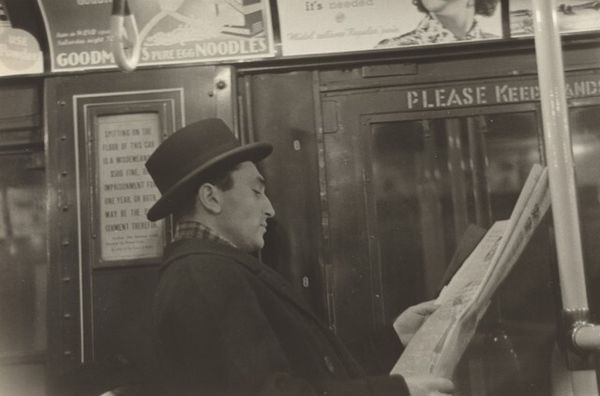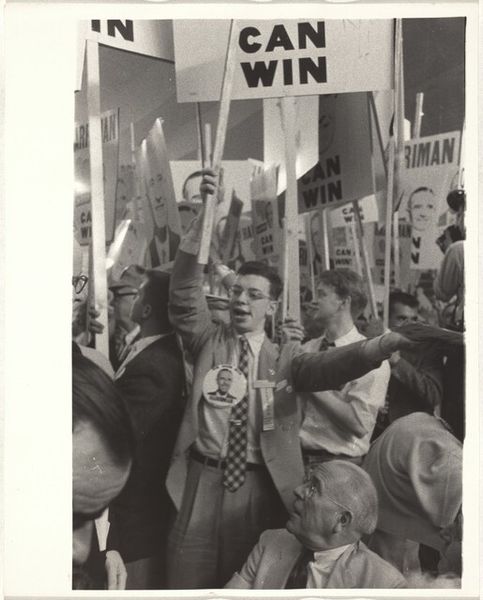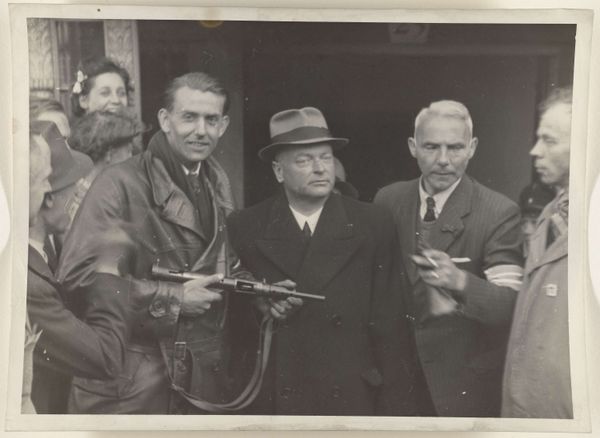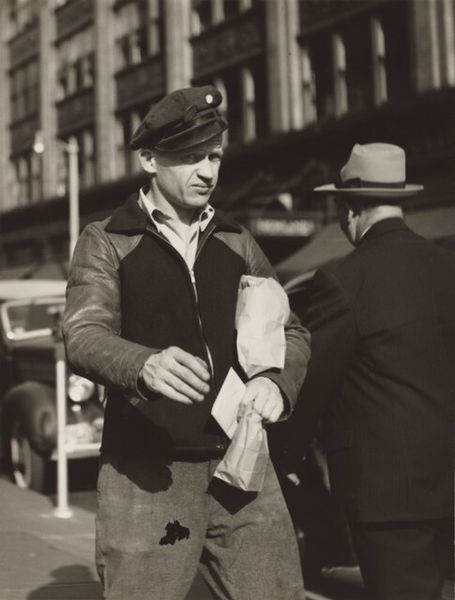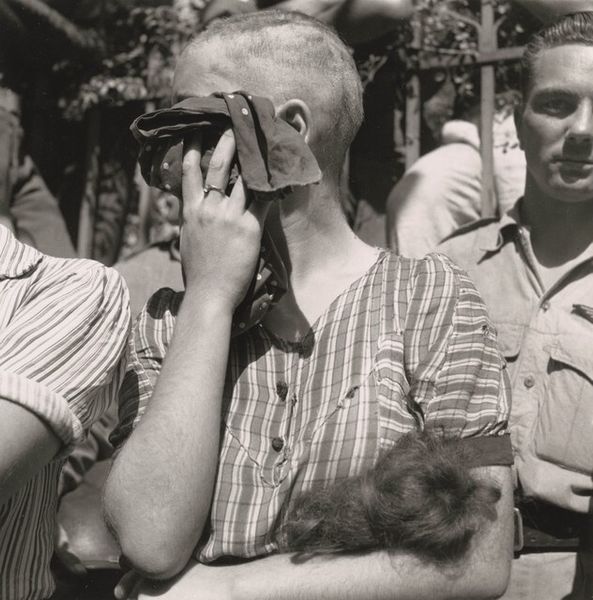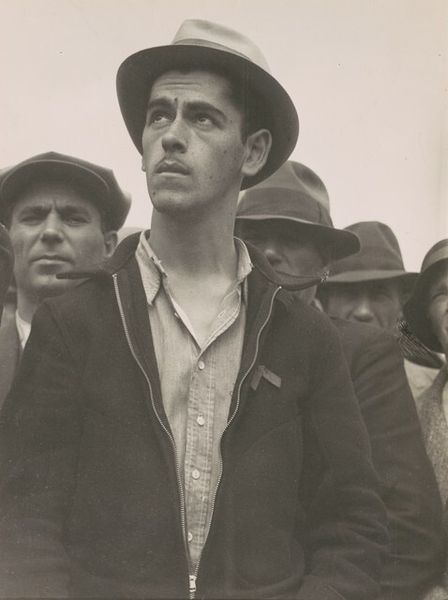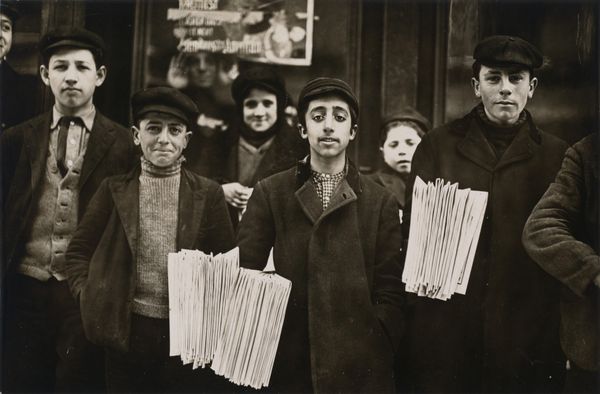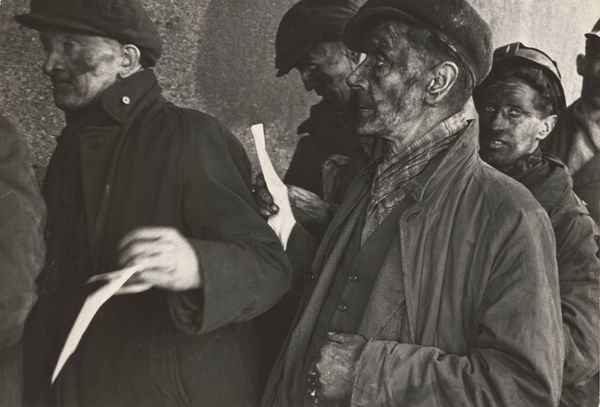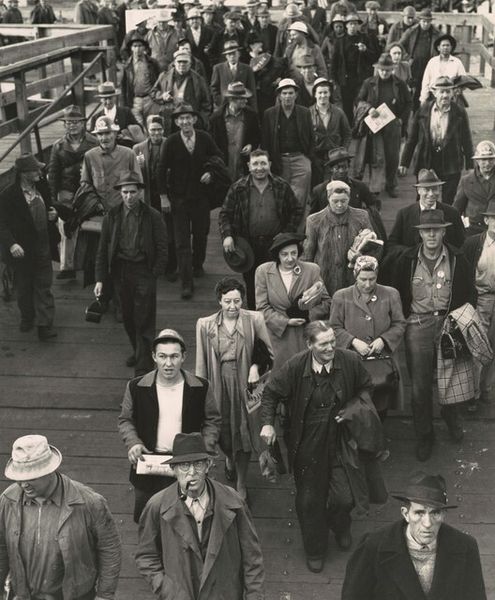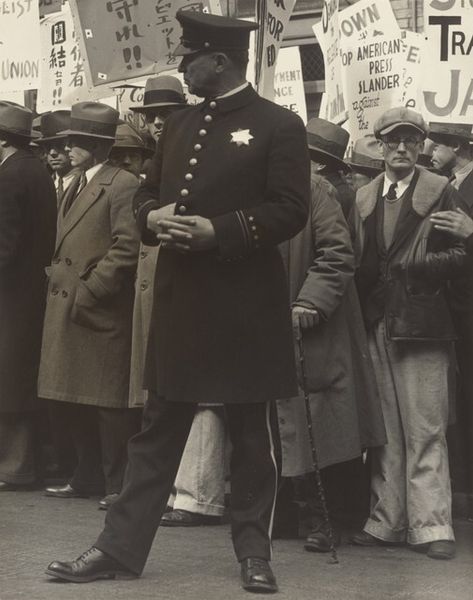
photography, gelatin-silver-print
#
portrait
#
black and white photography
#
social-realism
#
street-photography
#
photography
#
historical photography
#
black and white
#
gelatin-silver-print
#
monochrome photography
#
ashcan-school
#
history-painting
#
monochrome
#
realism
#
monochrome
Dimensions: image: 25 × 19.5 cm (9 13/16 × 7 11/16 in.) sheet: 25.4 × 20.32 cm (10 × 8 in.)
Copyright: National Gallery of Art: CC0 1.0
Curator: Looking at this gelatin silver print from the 1930s, I'm immediately struck by the direct gaze of the man on the left—there's something both defiant and vulnerable in his expression. Editor: That's exactly what grabbed me too. It feels… raw. I imagine this "Demonstration," as the piece is called, was captured somewhere in the thick of things during the Depression, judging from the 'WPA' on the sign they're holding. Curator: Indeed, its historical context lends layers to its interpretation, doesn’t it? Arthur Ellis’s photography frequently explored social-realism and belongs loosely to the Ashcan School movement—concerned with daily life, especially of working-class individuals and people on the streets. Editor: Which always makes me think about access – who held the camera, and whose story gets told? The medium itself—gelatin silver print—became accessible precisely when more marginalized figures began demanding visibility. Mass production for mass movements, you see? Curator: Absolutely. And note the contrasts: between the weathered textures of the jackets and the smooth flatness of the sign. There’s tension inherent in capturing something fleeting – a moment of protest. I think its enduring power stems from that simple visual binary; resilience framed against authority. What do you make of the tonal range in the composition? Editor: I can appreciate that; even these muted grays have impact. More literally, think about the materials at hand here. Gelatin, an animal byproduct—it reminds us that even artistic expression comes from a physical reality, the reality that also structured these people’s labouring lives in harsh conditions. The paper they printed on – probably sourced as cheaply as possible! Every material choice echoes broader systemic issues, it is far away from idealized heroic images we used to seeing, and brings in this very unique character. Curator: Precisely. Looking at "Demonstration" prompts us not only to recognize but truly feel the material circumstances from which both subject and artwork have emerged. It invites profound contemplation about justice, inequality, and creative production itself, it truly transcends documentation by offering intimate characterization in one of the crucial historical eras of the XX century. Editor: And that invitation comes materially; in black, white, and shades of gray extracted from real lived experiences… It holds sobering significance in modern discussions concerning inequality and resistance too, when many are losing the faith. It makes me wonder where are new WPA’s of our age!
Comments
No comments
Be the first to comment and join the conversation on the ultimate creative platform.



